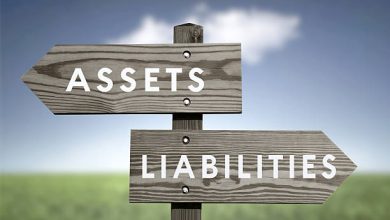What Does Paying Yourself First Mean? Prioritizing Your Financial Future – FangWallet

This article may contain references to products or services from one or more of our advertisers or partners. We may receive compensation when you click on links to those products or services. Nonetheless, our opinions are our own.
Key Highlights
- “Paying yourself first” means saving a portion of your income before spending on other things.
- This practice involves setting up automatic transfers to savings or investment accounts, fostering consistent saving habits.
- It builds financial security by helping you establish an emergency fund, plan for retirement, and achieve other financial goals.
- The amount saved can be adjusted based on your income, expenses, and personal goals, ensuring flexibility.
- Think of “paying yourself first” as a cornerstone of financial health and a step toward achieving your dreams.
Introduction
In personal finance, achieving financial security means managing money wisely. While monitoring your expenses is important, prioritizing savings is essential for building a strong financial foundation. One of the most effective strategies for doing this is the practice of “paying yourself first.” This article will explore how this approach can help you focus on your financial goals and consistently work toward achieving them.
Understanding the Concept of Paying Yourself First
“Paying yourself first” means saving or investing a portion of your income before allocating funds to other expenses. Unlike traditional budgeting, where savings are what’s left over, this method makes saving a priority. Treating savings like a fixed expense, such as rent or utilities, establishes a habit supporting long-term financial growth and stability.
The Basics of Personal Finance Management
Personal finance begins with understanding your income and expenses. Income typically comes from your salary or wages, which form the foundation of your budget. Expenses fall into two categories:
- Essentials: Fixed costs like rent, groceries, and utilities.
- Discretionary Spending: Flexible costs like dining out, entertainment, and hobbies.
Balancing these categories is crucial. Equally important is effectively leveraging financial tools like checking accounts, credit cards, and savings accounts. Successful personal finance management also requires clear goals, whether it’s saving for an emergency fund, planning a dream vacation, or securing a comfortable retirement.
Why ‘Paying Yourself First’ Is Key to Financial Stability
By saving first, you create a financial buffer to handle unexpected expenses or fluctuations in income. This safety net can reduce stress and provide a sense of security.
Additionally, regular savings allow you to take advantage of compound interest. Over time, this “snowball effect” can accelerate your progress toward financial goals. Saving early and consistently ensures a more secure financial future.
Beginner’s Guide: Getting Started with Paying Yourself First
Adopting the “pay yourself first” strategy can seem challenging initially, but it’s easier when broken into manageable steps.
What You Need to Begin This Financial Journey
- Define Your Goals: Determine your financial priorities—building an emergency fund, saving for a home, or planning for retirement.
- Use Tools to Stay Organized:
- Budgeting Apps: Track expenses, set savings goals, and automate transfers.
- Reverse Budgeting: Focus on saving a fixed amount first, then allocate the remainder to other expenses.
Step 1: Assessing Your Current Financial Situation
- Calculate your monthly income after taxes.
- Track your expenses for at least one month to identify essential and discretionary spending.
- Review your financial obligations, such as credit card debt or unexpected costs, to understand how they affect your ability to save.
Step 2: Setting Clear Financial Goals
- Establish both short-term goals (e.g., creating an emergency fund) and long-term objectives (e.g., retirement savings).
- Be specific and realistic about your goals, and set timelines to track your progress.
- Consider your risk tolerance and explore investment options that align with your goals and financial situation.
Implementing the Strategy: A Step-by-Step Approach
Step 3: Creating a Budget That Prioritizes Savings
- List essential expenses first (e.g., rent, utilities, debt payments).
- Dedicate a percentage of your income to savings, starting with 10% if possible. Adjust this percentage as your financial situation improves.
- Identify areas to cut discretionary spending to increase your savings.
Step 4: Automating Your Savings Plan
- Set up recurring transfers from your checking account to a savings or investment account on payday.
- Consider splitting your direct deposit to allocate a portion of your paycheck directly into savings.
- Automation ensures that savings happen consistently, reducing the temptation to spend.
| Automation Method | Description |
|---|---|
| Recurring Transfers | Automatically move funds from checking to savings on specific dates, like your payday. |
| Direct Deposit Split | Instruct your employer to deposit part of your paycheck directly into your savings account. |
Conclusion
“Paying yourself first” is a transformative financial strategy. Prioritizing savings and investing early establishes a strong foundation for financial security and long-term growth. Start by assessing your financial situation, setting clear goals, and automating your savings. With consistent effort, you can build a stable and prosperous financial future. Begin today and enjoy the benefits of smart money management for years to come.
Frequently Asked Questions
How Much Should I Pay Myself First?
The amount depends on your financial situation. Aim to save 10%–20% of your income. Start small if necessary, even with $5 or $10 per paycheck, and gradually increase as your financial situation improves.
Can Paying Yourself First Help in Debt Reduction?
Yes. Savings can reduce dependence on credit during emergencies, preventing additional debt. For those with significant debt, it may be wise to focus on paying off high-interest balances first.
Is It Possible to Pay Yourself First on a Tight Budget?
Absolutely. Start small and save consistently, even if it’s just a few dollars per paycheck. Over time, these savings will add up and improve your financial situation.
How Does Paying Yourself First Affect Retirement Planning?
This practice helps you build a retirement fund by consistently contributing to accounts like a 401(k) or IRA. The earlier you start, the more you can benefit from compound growth.
What Are the Common Challenges When Starting to Pay Yourself First?
Common obstacles include unexpected expenses, overspending, and breaking old financial habits. Overcoming these requires discipline, regular tracking, and staying focused on your long-term goals.

Reviewed and edited by Albert Fang.
See a typo or want to suggest an edit/revision to the content? Use the comment form below for feedback.
At FangWallet, we value editorial integrity and open collaboration in curating quality content for readers to enjoy. Much appreciated for the assist.
Did you like our article and find it insightful? We encourage sharing the article link with family and friends to benefit as well – better yet, sharing on social media. Thank you for the support! 🍉
Article Title: What Does Paying Yourself First Mean? Prioritizing Your Financial Future
https://fangwallet.com/2025/01/31/what-does-paying-yourself-first-mean/The FangWallet Promise
FangWallet is an editorially independent resource – founded on breaking down challenging financial concepts for anyone to understand since 2014. While we adhere to editorial integrity, note that this post may contain references to products from our partners.
The FangWallet promise is always to have your best interest in mind and be transparent and honest about the financial picture.
Become an Insider
Editorial Disclaimer: The editorial content on this page is not provided by any of the companies mentioned. The opinions expressed here are the author’s alone.
The content of this website is for informational purposes only and does not represent investment advice, or an offer or solicitation to buy or sell any security, investment, or product. Investors are encouraged to do their own due diligence, and, if necessary, consult professional advising before making any investment decisions. Investing involves a high degree of risk, and financial losses may occur including the potential loss of principal.
Advertiser Disclosure: This article may contain references to products or services from one or more of our advertisers or partners. We may receive compensation when you click on links to those products or services.
Source: What Does Paying Yourself First Mean? Prioritizing Your Financial Future – FangWallet




